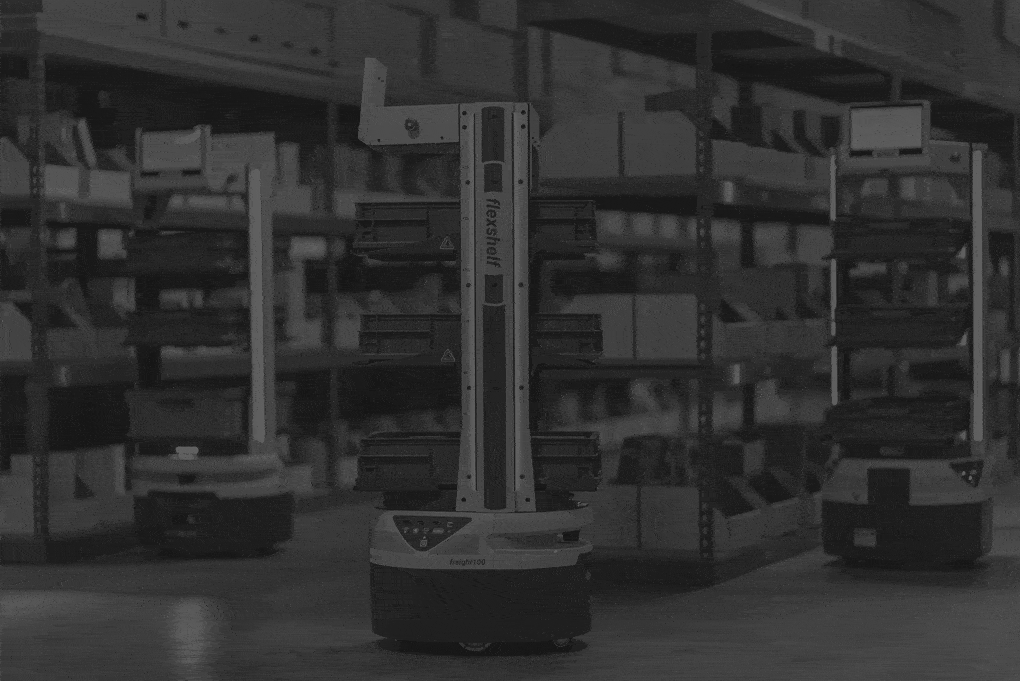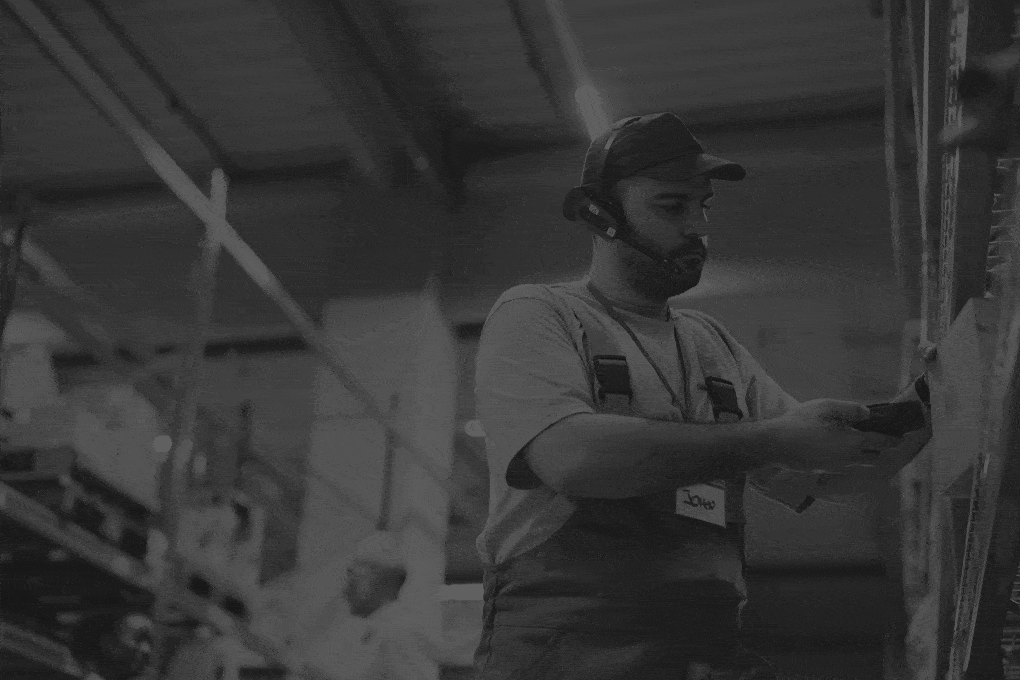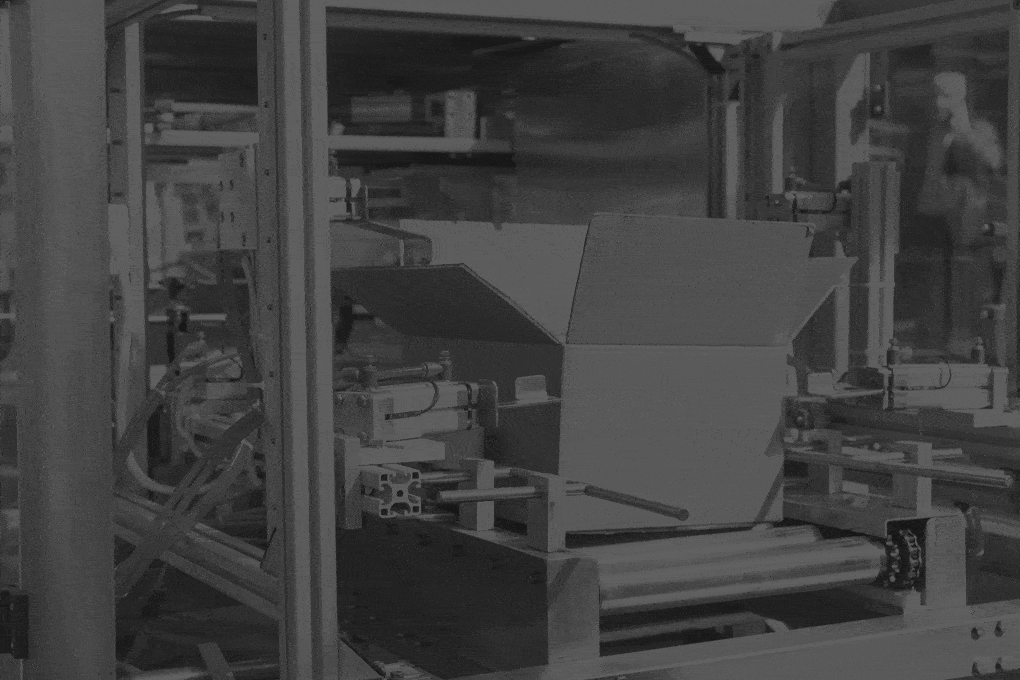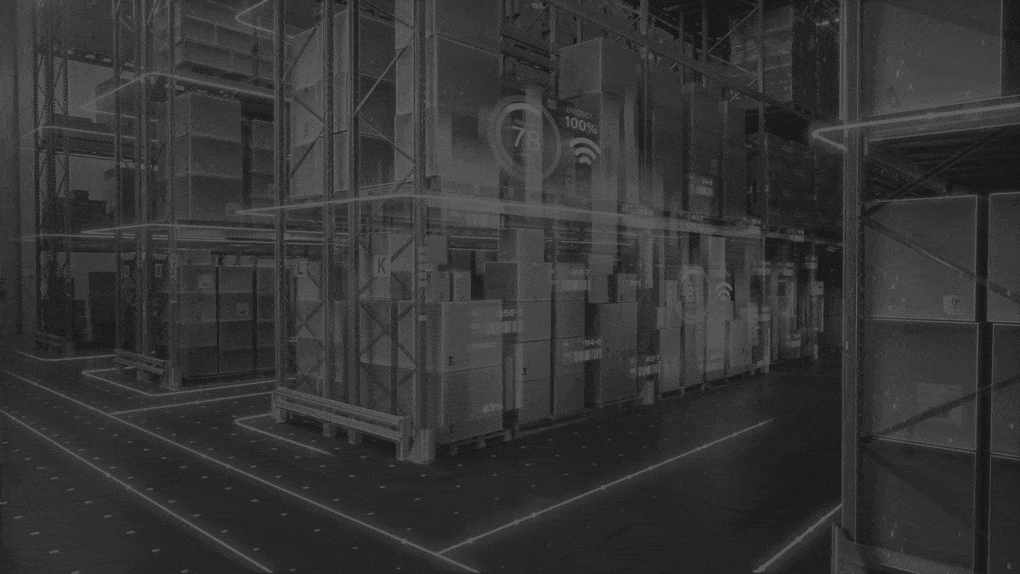A guide to warehouse automation.

The trend towards warehouse automation has been growing rapidly over the past few years. It has been driven by factors such as the boom in ecommerce, advancements in technology and customer demands for ever faster order fulfilment.
Ecommerce giants like Amazon and Alibaba have led the way in warehouse automation, employing thousands of robots and other automated warehouse systems.
While large-scale retailers and logistics companies are more likely to have heavily automated warehouses, many smaller businesses still rely on more traditional, manual methods. However, companies of all sizes and types can benefit from some form of automation.
Automated warehouses can benefit from a number of technologies. Here’s a look at the different types of warehouse automation, along with some use cases.
Goods-to-person.

Goods-to-person automation systems have a number of variations.
Automated Storage and Retrieval systems (AS/RS) bring trays, totes, pallets or bins from the racking area to the pickers. Once the goods for the order have been removed, the container is automatically returned to the storage area.
They can be configured in all sorts of ways to suit the warehouse and the products being stored. For example, Vertical Lift Modules use bins set within vertical columns to transport the required items to operatives. Conveyors – or carousels with rotating shelves – bring items to a workstation and move continuously, allowing workers to pick items from them as they rotate into view.
Goods-to-person automation systems are ideal where goods can be stored densely, in similarly sized bins. They maximise the amount of warehouse space required and improve worker productivity by bringing the items to the picker rather than having the worker walk to the items.
They are therefore commonly used in ecommerce warehouses to eliminate a lot of human travel and to speed up picking times. They can significantly improve picking efficiency, ensure accuracy and reduced labor costs.
Pick to light and voice picking.

For warehouses that want to retain the more traditional person to goods approach, order fulfilment can be improved by using automated warehouse technology that directs workers to the products one by one.
The equipment needs for this method are often lower than for more heavily automated processes. For example, pick-to-light systems use light indicators to guide warehouse workers to the location of items to be picked. Similarly, voice picking uses audible commands through a headset to direct workers.
These systems are widely used for order picking, especially in industries that have a high volume of small items, such as pharmaceuticals and electronics.
Robots.

Robotic automation can be used to perform various tasks within a warehouse, including picking, packing, putaway, replenishment and transportation.
Autonomous Mobile Robots (AMRs) are independent mobile robots that can navigate through a warehouse. They can transport items from storage areas and deliver them to operators or workstations.
These robots are often used collaboratively, to automatically guide workers to the next pick and to carry picked items before taking them for packing. AMRs can be quickly deployed and will often provide a rapid return on investment.
Heavyweight AMRs can move large items or bulk quantities of stock around a warehouse. They can move and navigate autonomously and have built-in sensors that allow them to route around the warehouse, avoiding obstacles as they go.
Introducing AMRs in a warehouse setting can lead to increased productivity and reduced costs. These advanced robots are capable of automating repetitive tasks such as picking, packing, and transporting goods within the warehouse. This eliminates the need for manual labor, freeing up employees’ time to focus on more complex tasks.
Drones and autonomous delivery vehicles.

Drones are unmanned aerial vehicles. While some are capable of carrying goods, they are often more commonly used for inspection and surveillance purposes.
Drones equipped with cameras and sensors can quickly and accurately scan and assess stock that is on shelves or in storage. This helps to track stock levels in real-time, reduce the need for manual stock counts and minimise errors. They are particularly suited to operations that stock large goods or where the warehouse facilities are particularly large or tall. Here, drones can cover ground more quickly than people and can gain better vantage points.
In the same way, they are ideal for surveillance and security within the warehouse. They can be deployed to patrol a warehouse to monitor for suspicious activities or unauthorised access.
In some cases, drones and self-driving delivery vehicles are used for last-mile delivery. Having previously tested drone deliveries, Amazon is rolling out the option for drone delivery for selected customers in some regions, starting in late 2024.
Warehouse Control Systems (WCS).

A Warehouse Control System (WCS) is software that manages and controls the automation equipment within the warehouse. It typically controls the actions of automated systems like conveyors, carousels, sortation equipment and AS/RS systems.
By coordinating and controlling their movements, the WCS ensures that automated warehouse systems work harmoniously and efficiently. It operates in real-time, constantly monitoring the status of equipment and materials within the warehouse and making decisions on movements and actions that will optimise workflow and ensure smooth and efficient operations.
The software assigns tasks to various automated devices and directs them to perform specific actions. These might include moving goods, sorting items or retrieving stock from storage systems.
But a WCS can do more than just task assignment. It can intelligently reroute items and strategically fine-tune equipment speeds. This dynamic approach minimises congestion within the warehouse while simultaneously optimising throughput. The WCS algorithms reduce bottlenecks and congestion, resulting in a seamless and efficient flow of materials within the warehouse.
A WCS is vital for synchronising the use of automated technology in warehouses where there are several different types of equipment and a large volume of tasks.
Automated packing systems.

Automated packing systems use specialist machinery to pack or wrap items. They might be used to insert orders into packages, like mailing bags, boxes or containers. They can also be used to wrap individual items, like foods or other produce.
Employing all manner of packaging formats, companies like Balloon partner Sealed Air provide automated systems that optimise the packing process to ensure goods are well protected during storage and transport.
Systems can automatically determine the right packaging size for the order and then choose the most appropriate packaging according to the contents.
There are automated packing systems that can erect cardboard boxes, dispense cushioning materials, seal and tape packages, print and apply shipping labels and dynamically print customer-specific information.
Automated packing systems are used in a variety of industries, but especially in ecommerce and retail. They are particularly valuable for businesses that have high order volumes and a requirement for precision packing.
Warehouse Management Systems (WMS).

At the core of all warehouse automation is the Warehouse Management System (WMS). The software manages and controls all aspects of warehouse operations and its supply chain.
It manages all processes and activities from the time that stock enters the warehouse until it leaves again. This includes receipt, putaway, replenishment, stock counting, stock management, picking, packing, shipping and labour management.
A WMS integrates with other software systems as part of an end-to-end supply chain solution. So it communicates with an Enterprise Resource Planning (ERP) system and ecommerce platform to receive order information and update stock levels. It can integrate with a WCS to manage warehouse automation and with a Transport Management System to provide customer information for shipping.
A WMS plays a vital role in optimising warehouse processes and bringing together the management of all warehouse automation. In doing so, it optimises workflows and streamlines processes. A WMS can speed up order fulfilment, optimise picking, ensure accuracy and provide real-time visibility into the operational aspects of the warehouse.
All warehouses can benefit from automating their processes – even those that only employ a handful of staff.
The future of warehouse automation.

Driven by ongoing technological advancements, the future holds some exciting developments for warehouse automation.
Robots are becoming ever more capable of carrying out intricate tasks and improved navigation. They are already commonplace but will only continue to augment the work of humans, in a collaborative way that will boost productivity.
The development of autonomous vehicles is set to continue. This will encourage greater adoption of autonomous forklifts and AMRs for materials handling in the warehouse, and of delivery drones for last-mile logistics.
Enhanced Artificial Intelligence (AI) algorithms and machine learning will enable better predictive analytics, which will further optimise stock management and overall warehouse operations.
Hands-free interfaces that use gesture control or voice-activated commands will improve worker efficiency and safety. And augmented reality systems for order picking and training will make tasks more intuitive and efficient for workers.
These trends indicate a future where warehouse automation continues to evolve. There are various benefits of warehouse automation, providing greater efficiency, flexibility and adaptability to meet the demands of an increasingly digital and data-driven supply chain landscape.